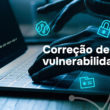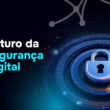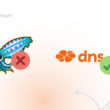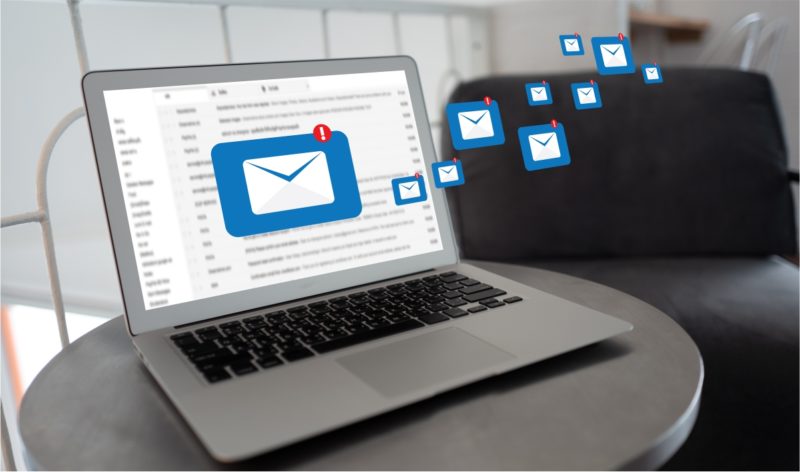E-mail has been used since the early days of the internet, being the favorite means of communication of companies and professionals, for their practicality and different types of approach. There was a time when the population believed that the email would end the arrival of WhatsApp , Telegram, Facebook and other websites and communication applications, but remain strong and increasingly present in the lives of professionals, so it is important to protect your email from virtual threats.
In 2019, active email accounts reached 5.6 billion, according to statistics from Statista , a German company specializing in market data and consumers. Pew Research survey showed that 92% of adults present in the online universe use email.
But after all, why is the email so important? Through email we receive and send information, important contacts and communicate universally, so the importance of protecting your email.
Today with the great evolution and performance of hackers and different types of malicious actions circulating over the internet, it becomes increasingly difficult to stay away from virtual threats. This brought a list of 5 simple steps that will help you protect your email from virtual threats.
Step 1: Check attachments to protect your email

It is necessary to be extra careful when sending or receiving attachments within the email, as they can load far beyond files, which can be harmful to your account, even leading to information theft because they are associated with viruses and being the most used cybercriminals.
Below are some tips on attachments that can be useful for safety:
- Avoid opening emails with strangers, always be wary of the content;
- If you happen to open an attachment suspected by accident, close the program (preferably in Windows task manager);
- Regardless of your operating system, keeping everything up to date can be critical to blocking a virus within an email attachment;
- When sending an email attachment safely, make sure that the file size is not too large.
Step 2: Avoid opening spam messages

Spam is the term used to refer to electronic messages that are sent to you without your consent and are usually dispatched to a large number of people. This type of usually undesirable email contains mostly advertisements, but in other occurrences, these messages contain more aggressive content (viruses and threatening content) and still get their personal information, such as bank data, for example. If you think you are being spam, check out the characteristics of these emails below:
- Although it is one of the oldest features, among those used by spammers , spam emails are still found claiming that it will be sent "once". This is a spam email feature.
- One of the most frequent, and worse, excuses used by spammers is to claim that if the user has no interest in the unquited email, just “remove it”.
- The email header appears incomplete, without the sender or the recipient. Both can appear as nicknames or generic names, such as: friend@, support@ etc. The omission of the recipient is one of the most common cases, because spammers put huge lists of emails in the reserved field for hidden carbon copies or Blind Carbon Copie S (CCO: or BCC :), as such fields are not shown to the user receiving the message.
- The field reserved for the subject of email is a trap for users and a powerful device for spammers . Most anti-spam filters are prepared to block emails with various issues considered suspicious. However, spammers adapt and try to deceive filters by placing content such as: vi@gra (instead of viagra) etc.
Step 3: Know that suspicious links should always be ignored

You should not click suspicious links, especially those that are linked to insecure sites, this is the largest door and also the simplest for threats to contact your network or device. We know that the link is a practical and widely used way to connect content to another on the internet, inside or external, but to be a good experience to the user, some precautions can be taken:
- If the user is unsure of the origin of the URL, it may be necessary to check with the contact if he really sent the information and if he is aware that the link is reliable;
- If the person is unaware of the platform used, and does not feel confidence in the information provided, it is best to ignore. Mainly emails that are in the spam box;
- Be careful when clicking on shortened links, as today many cybercriminals use tools like Goo.GL , to shorten links and make them unrecognizable.
Step 4: Have strong and secure passwords

Strong and safe passwords are important and everyone knows, but according to a survey by the Kaspersky , most people think they should only protect online bank accounts well (51%), email (39%) and online stores (37%). However, creating strong and secure passwords is very important, especially to keep your accounts safe, so I mentioned some tips for you to create passwords that really protect you in the virtual world:
- Prefer long passwords, with uppercase and lowercase letters, numbers and signs of punctuation;
- To remember or generate passwords, use a password management program or application such as Lastpass , Keeper or Kaspersky Password Manage ;
- Do not choose as code the name of family people, such as son, husband or even pet. By lightly investigating one's life, these names are easily discovered and can become a weapon.
Step 5: Stay alert to existing frauds

The best known type of fraud is Phishing , which consists of fooling the user to steal information from documents and bank accounts in order to use it for their own benefit. This type of fraud happens a lot through emails and false forms available on the web. Also, in no way think that maybe you or your business are too small to be a target of attack.
Criminals know that small businesses usually have less fraud protection when compared to large businesses. This is one of the reasons for you to worry even more about security, as today everyone can be the target of virtual crimes .
In addition to phishing that is considered an epidemic that has been making a lot of worried people, ransomware is one of the most dangerous malware, as it kidnaps the victim's device data and requests the payment of a release for release, usually using a virtual currency that makes almost impossible to track the criminal. This type of virus acts by encoding operating system data so that the user no longer has access.
How to be able to identify a fake email?

It is increasingly complicated and difficult for a user without specific knowledge to distinguish whether a message is linked to a fraud or not, as the attacks are evolving and approaching reality. Because of this, the schemes and virtual crimes are so frequent and successful.
A good example is the various counterfeit emails that come with links to known brands of real companies. However, you may be aware of some items to protect yourself:
- Social Engineering - Whether through rumors, phishing or simply spreading malicious software, the use of social engineering techniques is very common to persuade the reader. Usually the message appeals to the authority, giving the alert to some research organ, and the texts are inconsistent or with subjects that draw attention;
- They request the execution of a program - it is common for these software to be hosted on free services, which occurs with great ease given the great availability of this type of service. These are malicious applications, whose main objective is to collect victim information and allow remote access to the user's computer;
- Doubtful Email Address -Messages are intended to seem to have originated at the entity in question. This gives a false impression of credibility to the coup, especially for lay and unsuspecting users;
- False pages - indicate to the user an institution fake website or an exclusive re -registration page. These pages are often hosted on temporary domains, or free providers that may remember the name of an institution;
- Sensitive data - It is common for sensitive data such as personal and financial passwords to be requested. To increase the number of answers, criminals try to create a sense of urgency for people to respond immediately without thinking. Usually, banks do not send emails requesting data such as passwords.
Conclusion
After this article, I tried to bring some basic but valuable tips for protection against cyber attacks coming by email. It is important that managers, IT professionals and other employees of the company, know the importance of maintaining the necessary care with this tool, which, as we saw earlier in the text, is a tool still widely used in companies around the world.
I hope you enjoyed the article and that I have managed to help in some way.
To the next!










14 Comments
Comments closed